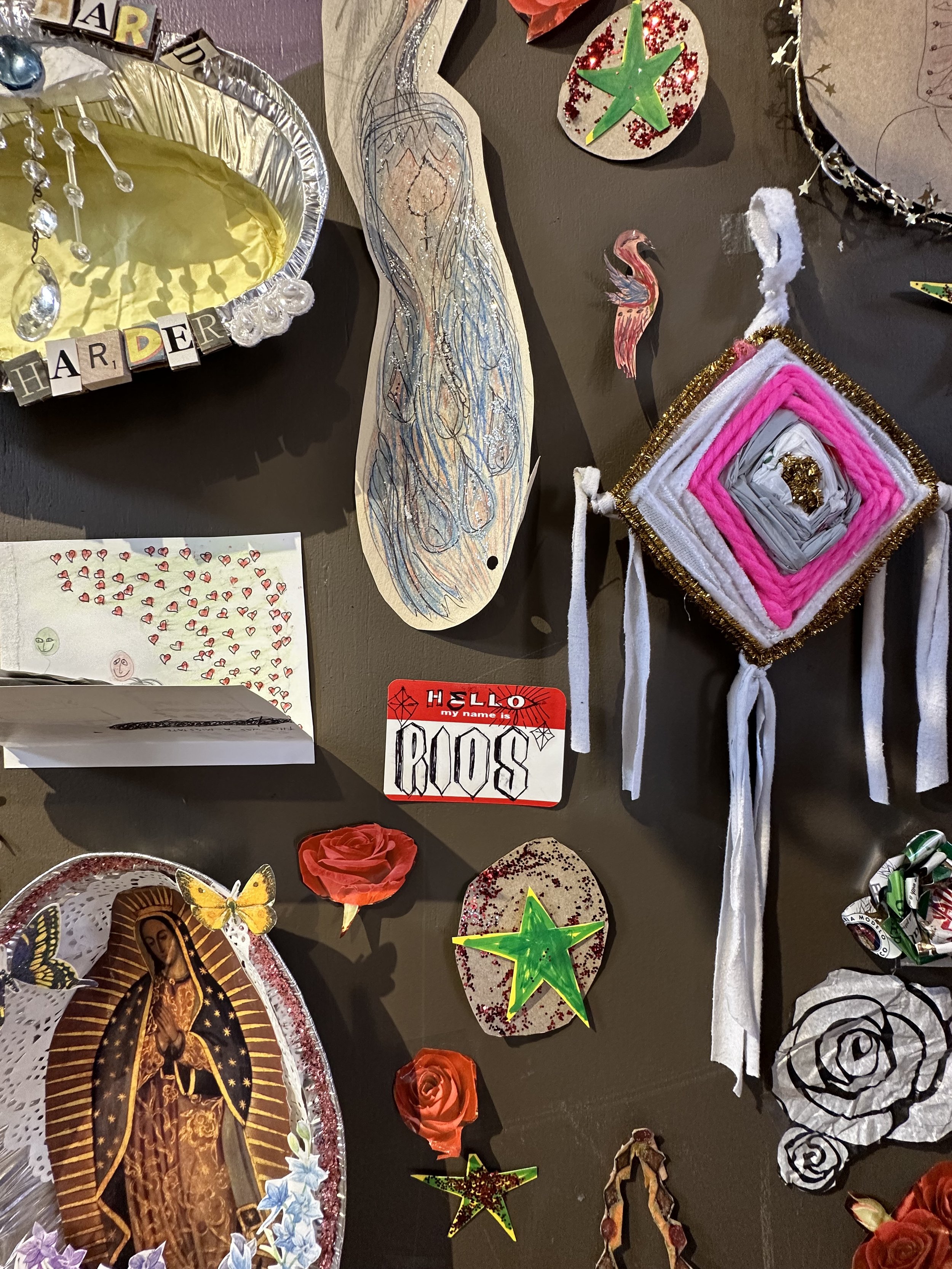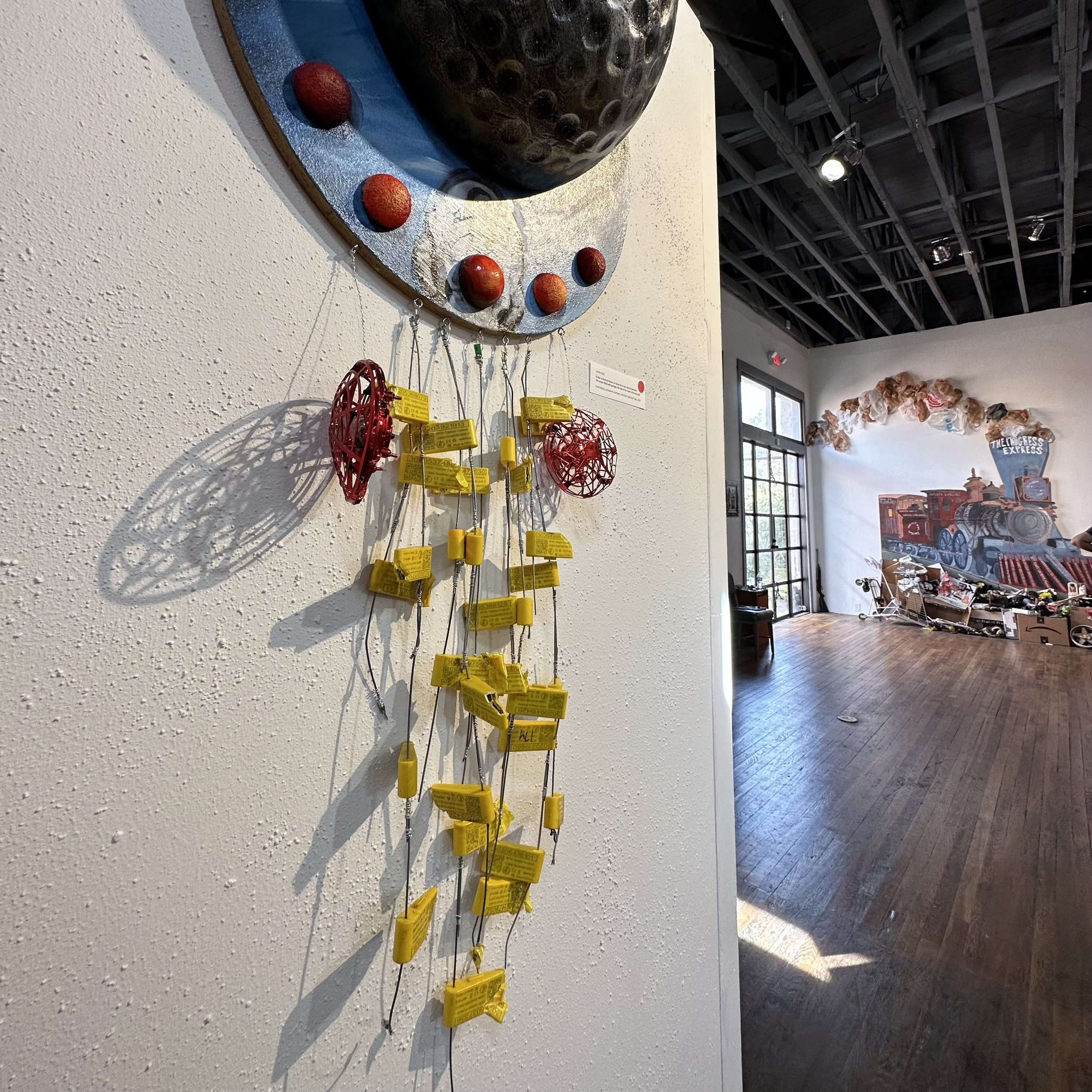Mel Dominguez, Rasquachismo, and the art of the discarded
Leer este artículo en Español
Casa de Rasquache is an art exhibit curated by Galería Mitotera, the brainchild of Mel Dominguez and Melissa Brown-Dominguez. For the last two months, this installation of eleven artists has made its home at Pidgin Palace Arts, a local art gallery on 6th Avenue and 22nd. The gallery is owned by Danny Vinik the founder of Brink, a creative agency, and a Board Member at MOCA Tucson. Casa de Rasquache is art imitating life, reflecting the beauty and tension of a part of Tucson that is the epicenter of culture and gentrification.
On Saturday, March 18th Casa de Rasquache will host its closing celebration.
The exhibit will probably reappear somewhere else: morphed, reimagined. After all, rasquache is all about being scrappy and making something out of nothing. If you’re a nana you probably express your rasquachismo by tending to your barrio garden where an old toilet is now a magnificent planter. If you’re an artist, you channel your inner rasquache through a fever dream of discarded computer parts, or by expressing meaning in the little chingaderas that you use to close a bag of pan, or breathing new life to a decapitated toy frog. Todo se vale en el mundo del rasquache.
Academics like UCLA’s Alicia Gaspar de Alba, a founding faculty member and former chair of the UCLA César E. Chávez Department of Chicana/o Studies have tried to make sense of rasquachismo. If you ask Mel Dominguez, they will give it to you straight: “It's the material that people used when they had nothing.”
We caught up with Mel Dominguez recently to hear their reflections on the success of the show and what’s next. Dominguez has always dreamed of bringing a Mexican Meow Wolf to South Tucson and Casa de Rasquache may hold the key to the type of experiences that could transport Tucsonans into new spaces, and perhaps even transform a community.
A section of we didn’t know (we were poor) until they told us
El Sur: What inspired Casa de Rasquache?
Mel Dominguez: "We wanted to do Casa de Rasquache because it's part of our cultural identity. It's the material that people used when they had nothing. Sometimes we're like, 'Why is there a bathtub there?!' There should be found pride in our neighborhoods. Here, we are showing it as fine art and elevating it on 6th Avenue and 22nd. How do we transform South Tucson without gentrifying it?”
El Sur: It seems like Rasquache is the antithesis of the Instagram aesthetic where everything is beige and perfect and symetrical and curated.
MD: (laughs) "That's why I brought that glitter painting! it's low brow. Here you actually get to walk into Rasquchismo. It is second life. There is a community that thrives off of reused materials. This is how we have been motioning that. ‘How do you use recycled materials to express a feeling?’ We're telling a story."
Artist Mel Dominguez uses discarded and recycled materials like these as an expression of rasquachismo.
El Sur: How did the collaboration with Danny Vinik come about?
MD: “South Tucson doesn't have a lot of available space. No one is wanting to give up space. I wanted to have a Meow Wolf to have continuous tourism. So Racheal Rios from Snakebite said, 'Why don't you hit up Danny Vinik?' We told him what we were up to, and he said 'Let's roll with it.'"
El Sur: What kind of statement are you making?
MD: "I'm giving folks access. We still exist in this area. We give artists space. Lupita Chavez works for the Pima County Library. We're also doing a nicho workshop with Racheal Rios and her father. A lot of people don't realize that being creative is our last true freedom."
El Sur: Is being scrappy part of Rasquachismo?
MD: "We're the underdogs. A lot of the artists in this show have been in Tucson for so long, but can you believe they haven't been acquired? We're creating a movement. If we're not doing this, who else is going to hold space? MOCA is a booked a year out. Because of our success they are thinking about how they do things over there.”
El Sur: Earlier you talked about gentrification, and taking up space as if saying it's either raza developing here or it's someone else doing it to us.
MD: “Some art is unreachable or unapproachable, you can't even buy it. And guess what? Not only can you afford the artwork and support vendors like Lower Arizona, or you might know the artist, or that artist might already be working in your community. Tucson enables us to do this with consciousness."
El Sur: What's next?
MD: “South Tucson, the one-point-two square miles. I'm working with students from Desert View and the University of Arizona Honors College and taking them outside to see what it's like to go outside campus. We're looking for young people, brown people. We're doing artwork to do economic and cultural sustainability. I'm hoping to identify and dignity places like the El Casino Ballroom as historical markers. We're going to keep lifting up because if we don't, who will? I'm keeping my word to the community."
Casa de Rasquache curators Mel Dominguez and Melissa Brown-Dominguez





